Featured
Maldives records 9.3 per cent hike in tourist arrivals in Sept

Tourist arrivals to the Maldives in September recorded year-over-year growth of 9.3 per cent, the island nation’s tourism ministry announced Wednesday.
Official figures for the month of September released by the tourism ministry show that a total of 117,619 tourists visited the Maldives during the month — a 9.3 per cent increase over the 107,620 in September 2018.
According to the September statistics, total arrivals for the past nine months of the year increased by 15.8 per cent to reach 1,251,690 compared to the 1,080,459 in the same period last year.
The strong performance in the January-September period is mostly due to a significant rise in tourist arrivals from the traditional European market, which recorded year-over-year growth of 47.5 per cent, and the relatively new American market, which recorded year-over-year growth of 24.7 per cent.
Relatively new markets such as Africa and the Middle East also maintained their strong performance.
Middle East saw its market share reach 3.8 per cent due to a 15.1 per cent increase in the number of tourist arrivals (42,774) in the January-September period, whilst Africa, which observed a 22 per cent growth in arrivals, contributed 1.1 per cent (13,285) of the total tourist arrivals over the past nine months.
All the top five source markets posted positive growth in arrivals by the end of August.
Despite a year-over-year drop of 11.6 per cent in arrivals in September, China maintained its position as the top contributor to Maldives tourism with a marketshare of 18.4 per cent, as arrivals from China increased by 3.7 per cent during the January-September period to reach 230,349.
India, which had recently overtaken traditional European markets to claim the second spot, maintained its position, as the Maldives’ closest neighbour retained a marketshare of 9.2 per cent with a 105.1 per cent growth in tourist arrivals during the past nine months of the year. A total of 115,507 tourists from India spent their vacation in the Maldives during the period.
Italy, which had in May lost the second place to India, maintained its position as the third biggest source market with a market share of 7.8 per cent. Arrivals from Italy increased by 31.7 per cent to reach 97,375 in the January-September period.
Germany and the UK, which slid to fourth and fifth position in May and again in August, retained their respective positions in September, as the UK and Germany maintained a marketshare of 7.3 per cent and 7.5 per cent, respectively. Arrivals from Germany grew by 16.8 per cent to reach 93,727 during the past nine months of the year, whilst visitor numbers from the UK saw an increase of 9.2 per cent to reach 90,963 during the period.
France, which saw its marketshare fall to 3.6 per cent, maintained the seventh position, whilst Russia claimed the sixth position with a marketshare of 4.7 per cent. Arrivals from Russia increased by 14.1 per cent to reach 58,306 by the end of September, whilst the number of French tourists visiting the Maldives in the same period grew by 22 per cent to reach 44,722.
The US and Japan maintained their respective rankings as the eighth (3.1 per cent of total arrivals) and ninth (2.7 per cent of total arrivals) biggest contributor to the Maldives tourism. Arrivals from the US market increased by 29.2 per cent to reach 39,013 in the past nine months of the year, whilst the number of Japanese tourists visiting the Maldives in the same period increased by 9.5 per cent to reach 33,367.
Meanwhile, the emerging Australian market knocked out established European markets such as Sweden and Switzerland from the top 10 source markets’ list, as Australia’s marketshare reached 2.4 per cent in September. Arrivals from Australia grew by 8.2 per cent in the January-September period to reach 30,066.
Maldives has welcomed over a million tourists this year, as the destination attempts to reach an ambitious target of 1.5 million visitors over the next three months.
The one millionth visitor of the year arrived in the Maldives on August 2 — a month ahead of last year. In 2018, the one millionth mark was reached on September 9, whilst it was celebrated in October the previous year.
Maldives welcomed a record 1.4 million tourists in 2018. It was a 6.8 per cent increase from the 1,389,542 tourists that chose to holiday in the Maldives in 2017.
Meanwhile, government has revised its forecast for the number of tourists visiting the island nation this year, increasing the estimate to a record 1.6 million from 1.5 million.
This positive growth in the tourism industry comes amidst concerns by private organisations representing industry stakeholders such as the Maldives Association of Travel Agents and Tour Operators (MATATO) over the lack of effort and budget to promote the Maldives as a destination.
These concerns come as the world-famous holiday destination struggles to match an increased bed capacity.
Over the past few years, dozens of uninhabited islands have been leased to local and foreign resort developers. Several international brands have entered into the market, increasing the number of resorts to more than 130. That number is set to increase as another 20 resorts are expected to open over the next two years.
Along with the new resort openings come the challenge of increasing demand from budget travellers who choose guesthouses over luxury resorts that the Maldives is known for. The guesthouse sector has rapidly expanded with over 500 guesthouses in operation today.
The previous government announced steps to maintain a structured growth in tourism, including a slowdown in leasing islands for resort development and increased marketing efforts in key markets such as China and the Middle East in order to reach an ambitious target of a record 1.5 million tourist arrivals this year.
Meanwhile, the new government has pledged to ramp up tourism promotion.
Reflecting the new government’s pledge, the state budget for 2019 includes MVR 104,200,000 (USD 6.7 million) for tourism promotion, up from MVR 34,733,333 (USD 2.2 million) this year and the previous year.
Photo: Kandima Maldives
Featured
Kuramathi Maldives announces private wellness programmes with Imron Zulfikar

Kuramathi Maldives has announced the arrival of esteemed holistic wellness practitioner Imron Zulfikar, who will undertake an exclusive residency at the resort from 15 December 2025 to 3 January 2026. During this period, guests will have the opportunity to participate in bespoke wellness experiences crafted by a recognised expert in integrative health.
Throughout his residency, Imron will conduct a series of private wellness sessions designed to restore balance, promote renewal, and enhance long-term wellbeing. His practice brings together ancient therapeutic traditions and contemporary fitness science, resulting in personalised programmes that support harmony, mobility, and emotional resilience. Signature offerings include:
- Watsu Water Healing Journey: A restorative treatment conducted in warm water, combining elements of shiatsu, massage, and gentle movement to release deep tension, soothe the nervous system, and foster a sense of tranquillity.
- Chakra Balance Therapy: A holistic session that aligns mind and body through crystal healing, guided meditation, and calming massage techniques.
- Meridian Deep Release Massage: A therapeutic blend of deep tissue massage and acupressure aimed at easing chronic tension, improving flexibility, and stimulating energy flow.
- Accu Glow Facial: A rejuvenating facial incorporating acupuncture and customised skincare to activate collagen production, detoxify the skin, and enhance natural luminosity.
- Oriental Slim Detox Massage: A treatment grounded in Traditional Chinese Medicine, combining acupuncture and massage to promote lymphatic drainage and support detoxification.
Imron is an accomplished wellness lifestyle coach and holistic fitness specialist with more than ten years of experience in acupuncture, tension release therapies, yoga, Pilates, and personal training. His integrative methodology nurtures physical alignment, emotional balance, and overall vitality.
He has worked with numerous luxury resorts and an impressive roster of high-profile clients, including Serena Williams, Emma Watson, Richard Branson, and members of the UAE Royal Family. Celebrated for his intuitive approach and refined technique, Richard Branson has previously referred to Imron as having “golden hands.”
Kuramathi Maldives looks forward to offering guests this exceptional opportunity to engage in transformative, individually tailored wellness experiences during Imron’s residency.
Drink
Felice Capasso brings award-winning mixology to The St. Regis Maldives Vommuli this February

The St. Regis Maldives Vommuli Resort will host World Class Global Bartender of the Year 2025, Felice Capasso, for an exclusive Tastemaker Series collaboration from 4–5 February. The partnership further strengthens the resort’s position as a destination for discerning travellers seeking craftsmanship, cultural depth, and refined experiences.
Located on a private island in the Dhaalu Atoll, The St. Regis Maldives has established a contemporary interpretation of island glamour. Its signature villas include some of the most coveted accommodations in the Indian Ocean, notably the John Jacob Astor Estate—one of the Maldives’ largest overwater residences—and the tranquil, beachfront Caroline Astor Estate. Each estate offers generous living spaces, expansive pools, and panoramic views, reflecting the resort’s dedication to elevated, residential-style luxury.
Within this sophisticated environment, The Whale Bar—an iconic overwater structure—will serve as the setting for Capasso’s arrival. As evening falls, the venue will adopt a vibrant Latin-inspired ambience, where guests will enjoy family-style small plates, bespoke cocktails, and rare vintages on tap while the sunset illuminates the lagoon. In this atmospheric setting, Capasso will unveil an exclusive cocktail menu for his bar takeover, blending classical technique with modern creativity.
On the following day, the resort will host an intimate Masterclass led by Capasso, centred on rum. The session will explore the spirit’s history, its regional expressions, and the narrative approach that distinguishes exceptional mixology. His expertise—rooted in precision, intuition, and storytelling—offers guests a rare opportunity to engage with a leading figure in the global bar industry.
This collaboration forms part of the resort’s ongoing Tastemaker Series, which brings influential creators and innovators to the island. By welcoming talents such as Felice Capasso, The St. Regis Maldives Vommuli Resort continues to craft immersive, evocative experiences that embody the distinctive spirit of St. Regis.
Drink
Sun Siyam Olhuveli unveils Milano, Olive Bar and Crust & Flame on Dream Island
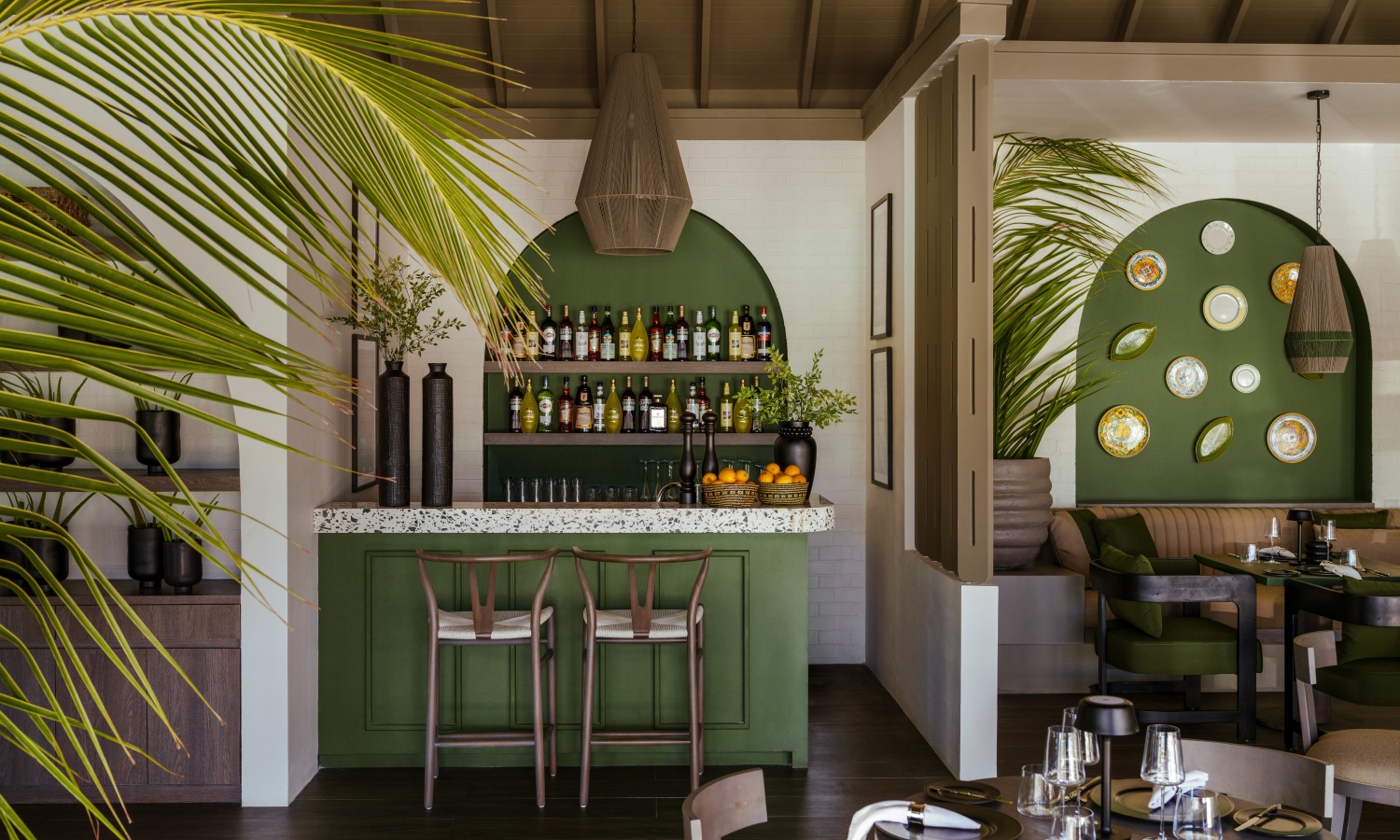
Sun Siyam Olhuveli has introduced three new dining and social venues on its Dream Island — Milano, Olive Bar, and Crust & Flame — each conceptualised by the award-winning Studio Sixty7. Together, the venues bring a contemporary expression of coastal European style to the Maldives, blending refined design, effortless island living, and a sense of community that positions Dream Island as the resort’s newest lifestyle and entertainment hub.
Milano – An Italian Soul with a Front-Row Kitchen
Milano celebrates the warmth and generosity of Italian dining, presented through a coastal aesthetic that feels both relaxed and refined. The open kitchen serves as the heart of the restaurant, where guests can watch chefs craft handmade pasta, simmer traditional sauces, and prepare wood-fired dishes. The experience is intimate and engaging, reflecting the sincerity of Italian cooking.
Studio Sixty7 designed the space with an olive-green palette, arched features, textured off-white plaster, linen drapery, and sculpted timber furnishings. Deep green crittall-style glazing adds a quiet elegance, while patterned floors create a gentle visual rhythm. As evening falls, woven pendant lights warm the room, making Milano ideal for leisurely lunches and romantic dinners. Every design detail balances Italian flair with Maldivian tranquillity.

Olive Bar – The New Entertainment Pulse
At the centre of Dream Island’s social energy, Olive Bar offers a refreshed take on family entertainment, hosting nightly performances from acoustic musicians and cultural acts to lively DJ sets. By day, it provides a relaxed lounge environment; by night, it transforms into a vibrant social hub.
The bar’s design embraces coastal openness, featuring timber shutters, adaptable lounge seating, abundant greenery, and natural textures that reflect Studio Sixty7’s craftsmanship-driven approach. Gentle ambient lighting completes the atmosphere, creating a welcoming setting for conversation, laughter, and shared experiences.
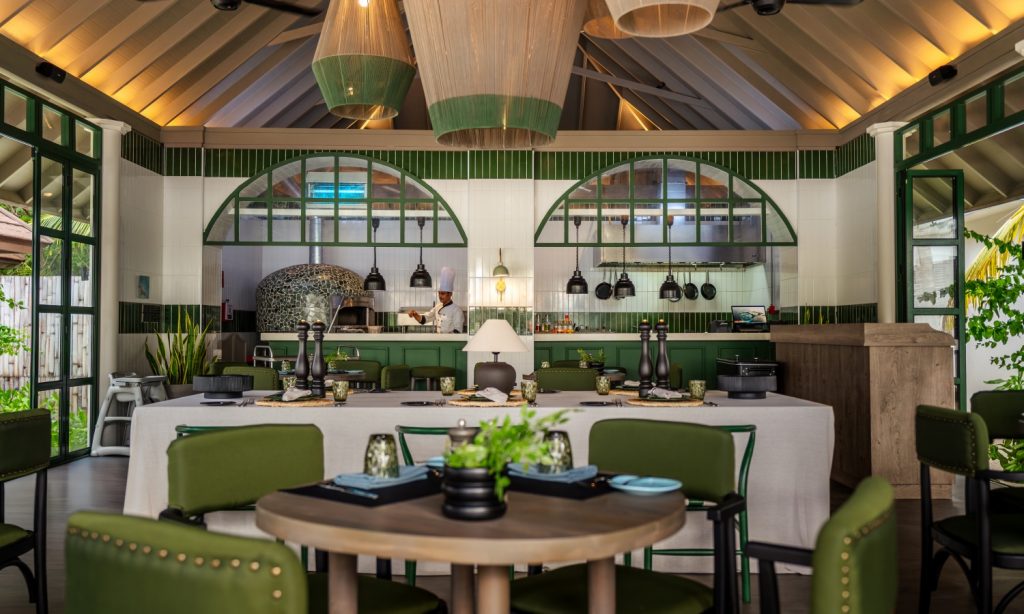
Crust & Flame – Casual, Beachside, and Comfort-Driven
Crust & Flame offers a relaxed beachside dining experience centred around artisanal brick-oven pizzas and contemporary light dishes. Its striking emerald-and-sage terrazzo pizza oven serves as the visual anchor of the venue, glowing subtly in natural light as chefs prepare fresh creations throughout the day.
Muted olive and white tiles, moss-toned upholstery, and dark timber seating create a coastal trattoria feel, while maintaining a distinctly Maldivian beach ambience — toes in the sand, ocean breeze drifting through the space, and a focus on simple, well-crafted comfort food.
Reflecting on the creative direction, Lee McNichol, Co-founder of Studio Sixty7, noted that the aim was to craft spaces that feel like a gentle exhale — warm, textured, softly lit, and subtly inspired by European coastal landscapes. Co-founder Jose Rivero added that the intention was to build venues that feel lived-in and soulful, where guests naturally settle into the experience rather than simply dine or watch a performance.
Hassan Adil, General Manager of Sun Siyam Olhuveli, commented: “Our vision for Dream Island was to create a place where guests immediately feel the rhythm of island life — relaxed, social, and full of positive energy. Milano, Olive Bar, and Crust & Flame each offer something distinct, yet together they form a cohesive atmosphere that encourages connection and enjoyment. It is Olhuveli at its most effortless and playful.”
With the launch of these venues, Dream Island evolves into a dynamic culinary and social destination where design, flavour, and ambience come together seamlessly. This development reflects Sun Siyam Olhuveli’s continued journey toward contemporary lifestyle hospitality, grounded in the warmth and authenticity of Maldivian service.
Sun Siyam Olhuveli now offers more than twenty restaurants and bars across its islands, ensuring an ever-diverse dining landscape shaped by creativity, global influence, and the joy of island living.
-

 Entertainment1 week ago
Entertainment1 week agoHulhule Island Hotel names 2ofus as New Year’s Eve 2026 headline act
-

 Cooking6 days ago
Cooking6 days agoThe St. Regis Maldives Vommuli Resort welcomes Chef Renzi Gianluca for Tastemaker series collaboration
-
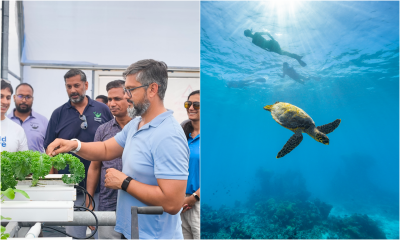
 News1 week ago
News1 week agoThe Standard, Maldives achieves Green Globe Certification after rigorous audit
-

 Cooking1 week ago
Cooking1 week agoChef Frank Fol leads plant-based culinary programme at ananea Madivaru Maldives
-
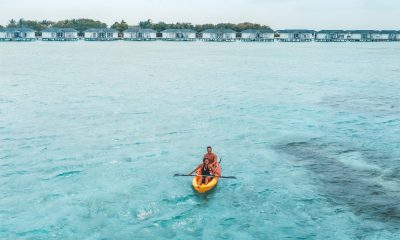
 News1 week ago
News1 week agoCinnamon Maldives updates book direct offer to let guests choose tailored experiences
-

 Entertainment5 days ago
Entertainment5 days agoAward-winning singer Nicole Scherzinger to appear at One&Only Reethi Rah’s New Year’s Eve celebrations
-

 News1 week ago
News1 week agoBandos Maldives marks 53 years of hospitality with guest celebration
-
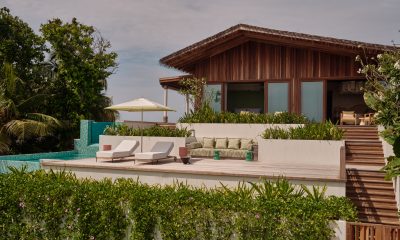
 News5 days ago
News5 days agoSeaside Collection opens .Here, an ultra-private two-island resort in Maldives















